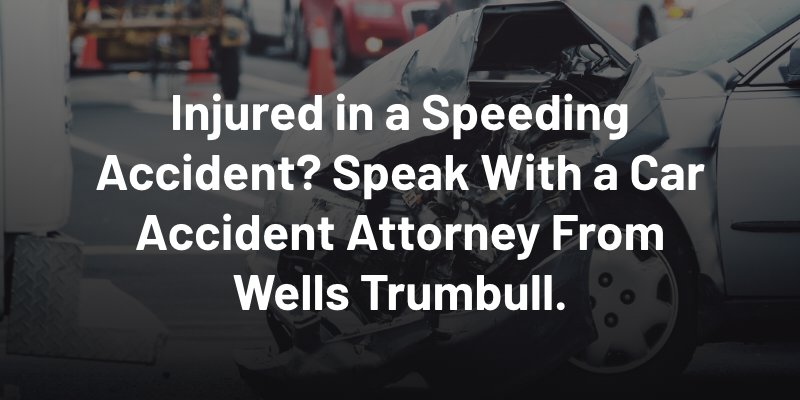When roadway planning agencies and traffic experts set local speed limits on highways, Interstate sections, and urban areas, they select the maximum speed for safety in that specific area. They take into careful consideration the conditions of the roadway and traffic. When a driver exceeds the speed limit, it means they aren’t driving safely for the road conditions and traffic congestion. If the result is an accident, speeding leaves the driver at fault, or partly at fault, for the accident. Under Washington’s pure comparison negligence insurance laws, this impacts liability and the amount of compensation recoverable after an accident. Make sure to speak with an experienced car accident attorney in Everett for legal guidance.
How Does Speeding Contribute to Accidents in Washington?
According to the National Highway Safety Administration (NHTSA), speeding is a significant factor in nearly one-third of all car accidents. Speeding-related car accident fatalities reached a 14-year high nationally in 2021 and continue to climb. In Washington, there were 810 car accident deaths in 2023. According to police reports, 251 of the fatalities were speeding-related. Speeding causes or contributes to car accidents in the following ways:
- Faster speeds require longer stopping times, leading to an increased chance of rear-end collisions
- Speeding causes a driver to lose maneuverability, making it harder for a driver to maintain control
Speeding also reduces the effectiveness of a vehicle’s safety features and increases crash force.
Understanding Crash Force and Speeding Accidents
The crash force in a collision increases significantly for every ten miles per hour of speed. Even at a sedate 35 miles per hour, an average 125-pound person becomes a 4,375-pound force propelled forward against the seatbelt and snapped back against the seat cushion. When that same driver exceeds a 35-mile-per-hour speed limit by ten miles per hour, the crash force increases to 5,625 pounds. The crash force alone in a car accident can cause serious bodily trauma, but the inward crash of a car’s structure adds to the injuries even when a motorist wears a seatbelt.

How Does Speeding Affect Liability in Everett Car Accidents?
Not only does speeding escalate the chances of an accident, increase the crash force, and cause a higher risk of injury, but it also increases liability in an accident. In a fault-based insurance state like Washington, exceeding the speed limit is a breach of the legal duty of care that all drivers have to take reasonable measures to prevent causing injury.
Washington operates under a pure comparison negligence insurance system. Under this system, accident victims can recover compensation for damages even if they contribute to the cause of an accident, but their compensation will be minus their percentage of fault. Depending on the circumstances, a speeding driver could be 100% liable for property damage, medical expenses, lost wages, and compensation for pain and suffering. In other cases, an injury victim could recover less compensation due to speeding even if the other driver ran a red light or committed another traffic offense. For instance, if an insurance adjuster assigns them 25% of fault in an accident because they were speeding, they’d recover $75,000 in a $100,000 compensation claim.
Other Types of Car Crashes in Everett
- Speeding-Related Crashes
- T-Bone (Side-Impact) Accidents
- Rear-End Collision Cases
- Head-On Car Wrecks
- Unsafe Lane Change Accidents
- Multi-Vehicle Pileups
- Uber Car Accidents
- Lyft Car Accidents
- Distracted Driving Accidents
- Drunk Driving Accidents
- Uninsured and Underinsured Motorist Claims
How Can an Everett Speeding Accident Attorney Help?
The comparison negligence insurance system in Washington incentivizes insurance companies to assign fault to injury victims. Speeding can leave a motorist liable for damages or partly at fault for the damages in an accident. Whether you were injured due to another driver’s speeding or an insurance adjuster is trying to reduce your compensation by assigning you an undue burden of fault in an accident because you exceeded the speed limit, a Washington car accident lawyer can help. Contact Wells Trumbull today for the experienced representation with a personal injury lawyer in Everett that you deserve in your car accident case.